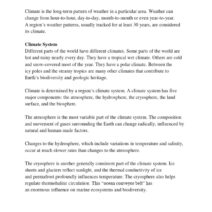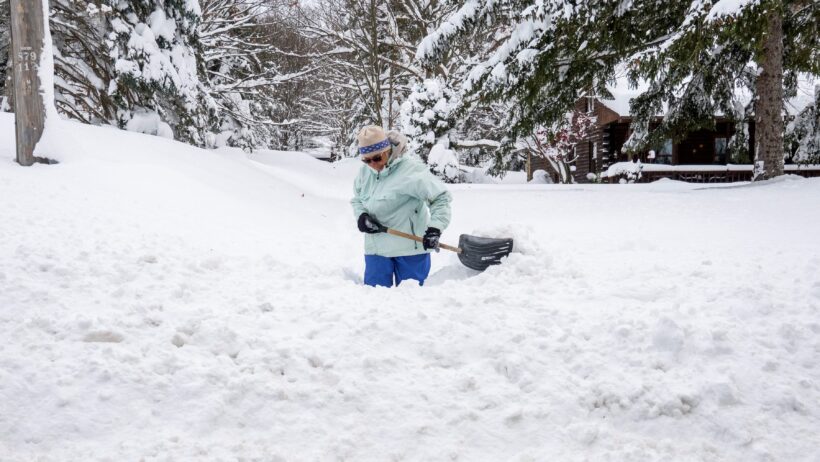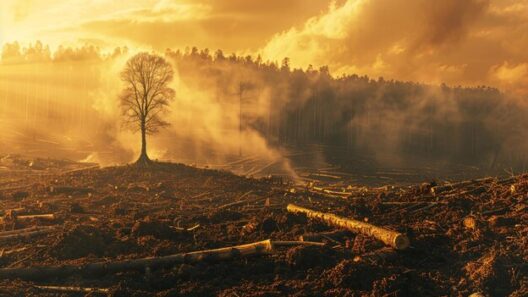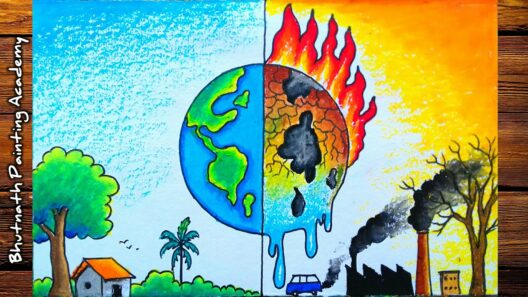Climate change is an intricate tapestry of cause and effect, with layers that can baffle even the most astute observer. One of the most enigmatic aspects of this phenomenon is the paradox wherein global warming, a term that evokes images of blistering summers and disappearing ice, can also yield colder winters and trigger extreme weather patterns. This paradox compels an examination of the underlying mechanisms that fuel this complex relationship, urging us to rethink our understanding of climate dynamics.
At its core, global warming refers to the gradual increase in the Earth’s average surface temperature due to the accumulation of greenhouse gases (GHGs) in the atmosphere. These gases, primarily carbon dioxide, methane, and nitrous oxide, trap heat, creating a greenhouse effect that is essential for maintaining life on our planet. However, as human activities predominantly from industrialization continue to pump more GHGs into the atmosphere, the delicate balance of our climate system begins to shift.
While it may seem counterintuitive, the rise in global temperatures can lead to fluctuations in weather patterns, significantly affecting winter seasons. One of the key players in this phenomenon is the polar vortex, a large area of low pressure and cold air surrounding the Earth’s poles. Under normal circumstances, the polar vortex remains relatively stable, keeping frigid Arctic air confined to the polar regions. However, as the climate warms, the dynamics of the polar vortex can become unstable.
Research indicates that warming temperatures in the Arctic can contribute to a weakened polar vortex. When the polar regions heat up faster than the tropics, it can disrupt the jet stream, a powerful air current that flows from west to east across the Northern Hemisphere. This disruption can cause the jet stream to become wavier, allowing cold Arctic air to plunge southward into mid-latitude regions, leading to severe cold spells and extreme winter weather conditions.
The implications are profound. Think back to the notorious polar vortex event of January 2019, where frigid air masses plunged down to the Midwest and Eastern United States, causing record low temperatures and paralytic winter storms. Such instances are not mere anomalies; they illustrate the systemic changes wrought by climate change. As the planet continues to warm, these occurrences may become more frequent, casting a long shadow over climate forecasts.
Additionally, the increased energy and moisture in the atmosphere due to higher temperatures can lead to extreme weather events. Warmer air holds more moisture, which can precipitate heavier rainfall and storms. Conversely, when the atmospheric conditions favor certain patterns, this moisture can transform into debilitating snowstorms during winter months. The juxtaposition of warming temperatures with the potential for cold, snowy winters symbolizes the complexity of climate science—global warming is not a simple linear progression of heat, but a series of interlinked systems influenced by multiple variables.
Another vital aspect of this discussion involves the concept of feedback loops. The melting of Arctic ice, which results in less sunlight being reflected back into space, accelerates warming. Consequently, as ice diminishes, less insulation is provided to the Arctic atmosphere, further destabilizing weather patterns. These feedback loops not only amplify warming but also disrupt established norms, creating a chaotic climate system.
Adverse effects are not limited to winter cold snaps and extreme weather; they extend to ecosystems and human livelihoods. As species habitat ranges shift due to temperature changes, ecosystems can face unprecedented stress. Plants and animals that are not able to adapt quickly enough to changing climates may face extinction. Agriculture, too, is susceptible to these erratic weather patterns. Farmers may encounter conditions that challenge traditional planting and harvesting schedules, placing food security at risk.
Addressing this climate paradox goes beyond simple acknowledgment. Mitigation strategies, such as reducing greenhouse gas emissions, employing renewable energy sources, and fostering sustainable agricultural practices, are essential to curb the escalation of climate change. However, adaptation is equally critical. Communities must prepare for the realities of shifting weather patterns, investing in resilient infrastructure and early warning systems that can help mitigate the effects of extreme weather events.
Engaging in informed dialogue with stakeholders and the public is crucial. A well-informed populace can advocate for policies that promote environmental stewardship and hold corporations accountable. Education initiatives that illuminate this intricate relationship between global warming and severe winter weather can foster a more adept approach to environmental challenges.
Ultimately, the climate paradox—where global warming begets colder winters and extreme weather—is a profound illustration of nature’s intricate interdependencies. It serves as a poignant reminder that climate change is not merely a distant threat but a current reality that affects all aspects of our lives. As our understanding of these complexities grows, so too must our commitment to addressing the roots of climate change with the urgency it demands. The resulting changes in our climate present both challenges and opportunities, and it is through informed action and collective responsibility that we can forge a path toward a sustainable future.
This nuanced perspective invites us to reconsider our assumptions about climate change. Rather than viewing warming in isolation, we need to recognize it as a catalyst for a range of unpredictable outcomes in weather patterns and ecosystems. By grasping the intricacies of these relationships, we can better prepare ourselves and the planet for the challenges that lie ahead, ensuring a more resilient future for generations to come.







